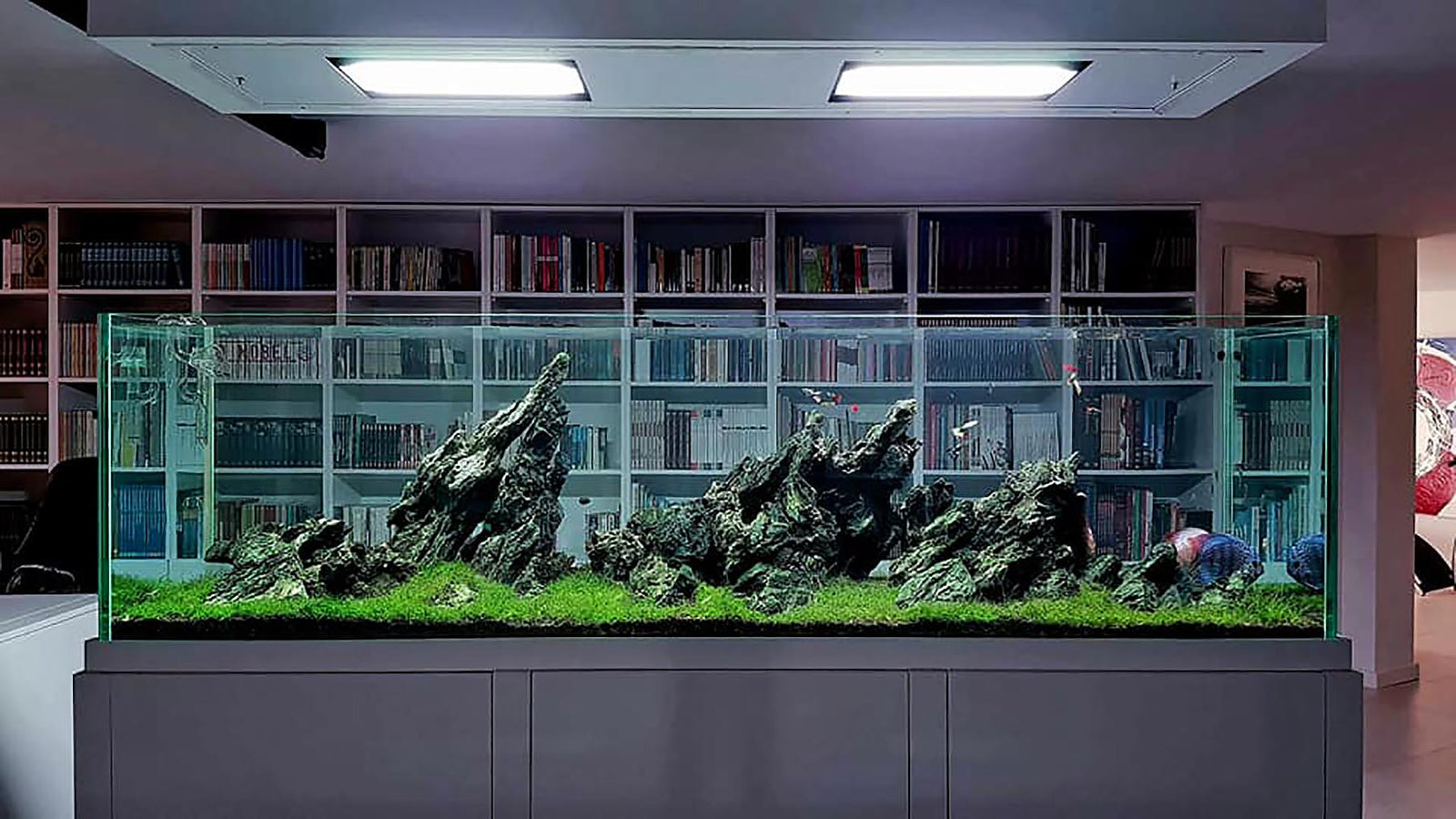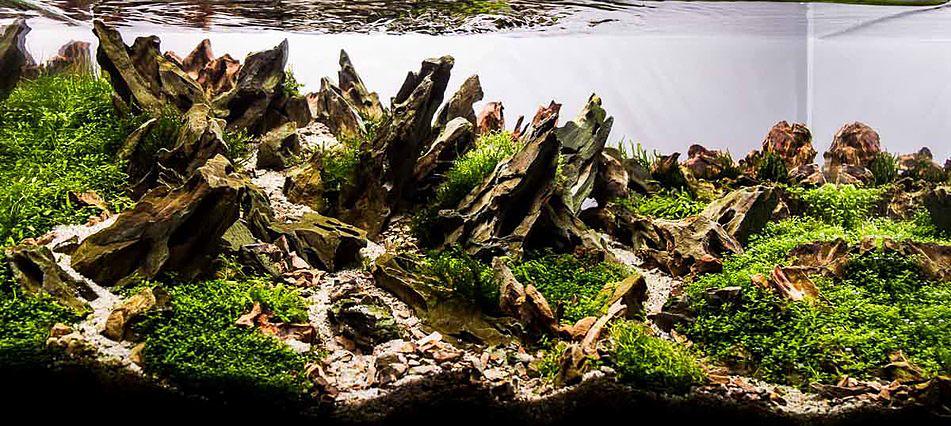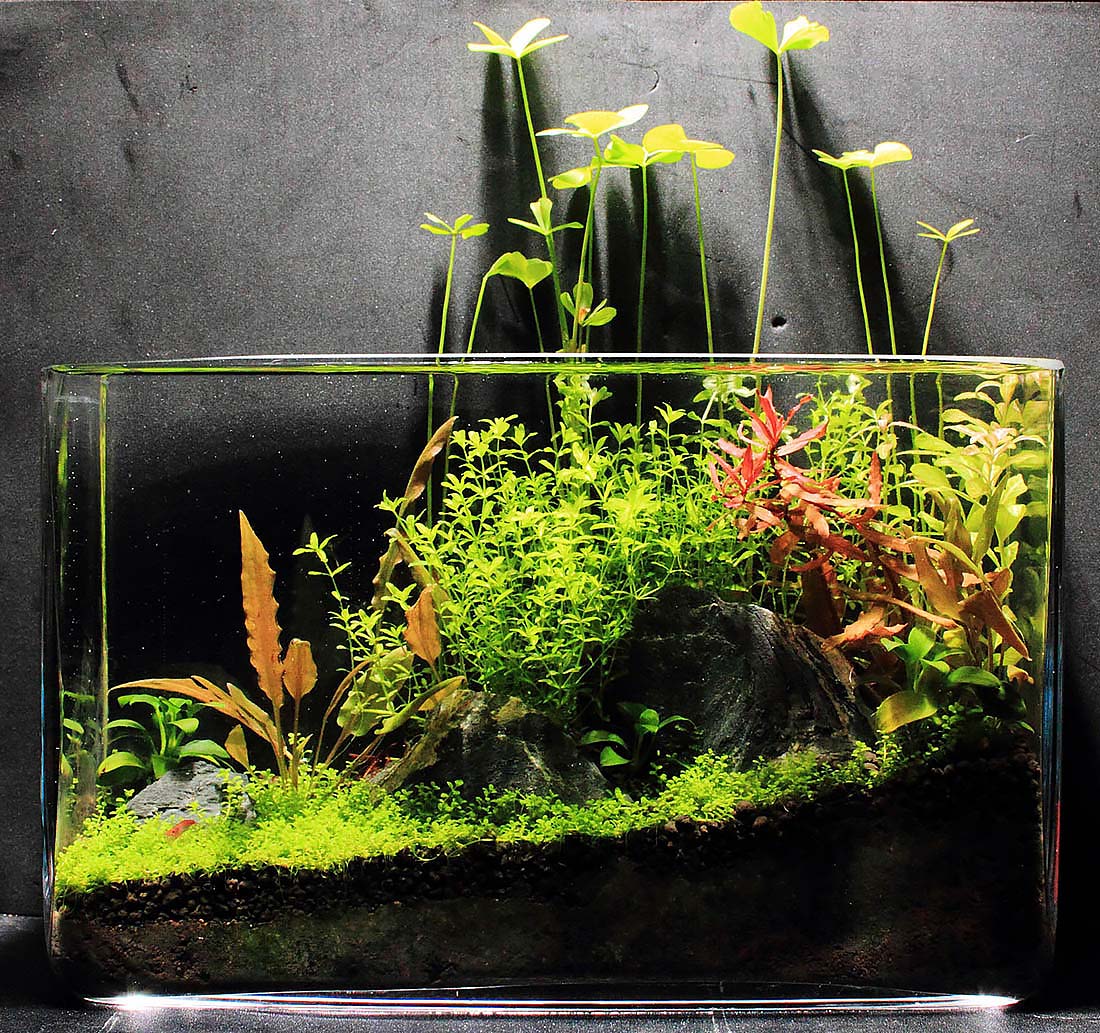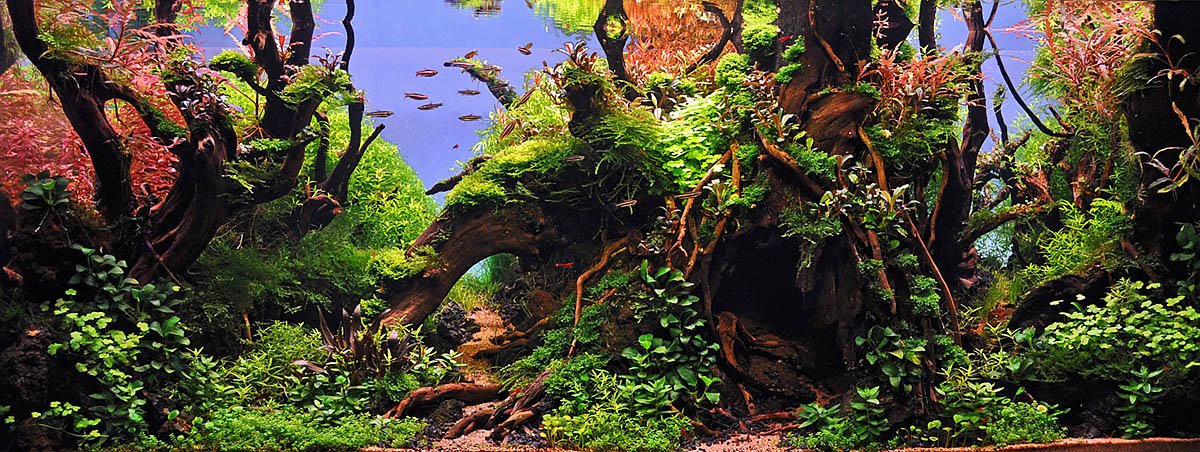
Should I get a larger or smaller tank?
The question that bugs every tank buyer. The usual answer is that a larger tank is more stable parameter wise and allows more leeway bio-load wise. While this is true for a fish focused tank, if you are starting out new to aquascaping, a smaller tank is almost always a better choice.
Smaller is better ??
The instabilities of smaller tanks are over-stated by the internet community. The main leeway that larger tanks give is with regards to livestock – waste products are diluted in a larger volume of water. In terms of general maintenance, smaller is definitely easier.
Concentrating effort, time and funds into a small space makes better setups for folks that are new. It takes a while to learn how to manage plants or build larger complicated hardscape. Cost of mistakes and doing tank resets is also lower in smaller tanks and encourages experimentation (and beginners always make mistakes).
Beginners will also want to experiment with different tank styles, types of plants, substrates – to change any of these in a large tank is costly and time consuming whereas to ‘test’ these choices in a smaller tank is easy.
Buying enough hardscape to fully decorate a 4ft tank will cost hundreds of dollars – it is not wise to commit this amount of money until you have succeeded with a similar concept on a smaller tank. Focused effort and budget in a small space often produces much better results than half-committed effort in a large tank. Also, it takes a bit of experience to estimate how much and what type of hardscape you will require in a large tank.
Maintenance is another huge angle to tank size. Folks that over commit to large tanks before they are prepared often result in poor maintenance. If you cannot master a small tank, it’s hubris to think that you will do well on a larger tank.
A 2Hr Aquarist Nature Style Diorama 9.5 gallon tank – learning to work with small spaces is invaluable, especially in learning techniques such as extracting more depth with less work space. Total cost of hardscape, plants, substrate and tank will be less than 150 USD. (Excluding light, filters, CO2 etc)
A planted tank that is only 7 gallons (18″x11″x7.5″) expertly scaped by Jeff Miotke. A testament that focused effort in a small setup can produce great results.
Read his full journal and see his progression pics here. We estimate that hardscape, tank and plants would cost less than 100 USD.
Basic layering principles can be applied even to micro tanks such as a 1 gallon flower vase above; which has 3 inches of substrate space from front to back. Total cost of tank + setup is probably less than 30 USD with change.
A 2Hr Aquarist 4ft setup (120x45x45). Total cost of hardscape, substrate, plants, tank would be around 800 USD (excluding filters, CO2, lights etc).
Which style of aquascape?
- Tanks that have more depth (distance between front and back glass) are easier for aquascaping in general. Longer formats also allow aquascapes to appear larger. The opposite – taller tanks with less depth (such as the 1 gallon vase above) are much harder to work with and harder to light. Depth is especially important for aquascapers intending to do hardscape focused dioramas.
- Long, short tank dimensions are especially ideal for Japanese-style Iwagumi style landscapes with long horizon line expressing open plains and rolling hills. A 20 gallon long is a great dimension for a smaller tank while the ADA 120p (120x45x45cm) is one of the most popular dimensions in competition aquascapes. Having tall tanks but very short stones seldom give aesthetic proportions. Having rocks that are at least 3/4 the height of your tank generally work better. Attaining tall / large stones can be difficult so this means that if you only have shorter rocks – you need to get a shorter tank to match your layout.
- One exception is that slightly taller tank dimensions are great for Dutch style scapes with stem plants that require a certain height to grow to their full size. Standard 45cm (1.5ft) tall tanks are good enough for a good variety of species. However, a custom dimension of 50cm or even 60cm tall will allow larger species to shine. However, tall tanks can be harder to light well, and more troublesome to reach into to work.
- Avoid square tanks – they are hard to compose well. Only buy them if you have a specific design in mind that fits a square.
Cost
- Costs can balloon with tank size. Beginners tend to underestimate the cost of purchasing hard scape supplies (wood and stone), good planted aquarium lighting systems and end up with large but bare tanks.
- As a very rough guide, set aside a budget for hard scape that is equivalent to the total cost of Lights+Tank. Aquarists that are new will be shocked at how much budget it actually takes to construct a decent hard scape layout.
- A 2ft aquascape with nice equipment can cost around 1000 USD inclusive of cabinet, tank, CO2 system, light, filter, substrate & hardscape. A 2ft budget build without CO2 and cabinet and cheap lighting/filter cost less than 300 USD. So the range varies quite a bit. (These assumes fully aquacaped setups, not just tanks with some plants).
- A 4ft tank with nice equipment similarly can cost around 2500 USD inclusive of cabinet, tank, CO2 system, light, filter, substrate & hardscape. Add another 30% if you live a country where shipping is expensive or taxes are high.
- The main fixed cost is the CO2 system. A good quality CO2 system can be used on a tank of any size and for most hobbyists, they will only require 1 CO2 system per tank. A good commercial system will cost around 250 USD. A budget system that will work can cost below 100 USD – but with less reliability.



